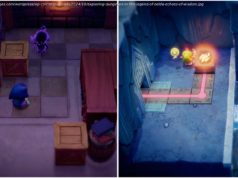With Shadow of the Erdtree officially here, it’s time to revisit Elden Ring on PC to find the best settings.
Elden Ring just received a massive update. The new Shadow of the Erdtree expansion is like an entirely new game, so I dove back into the Lands Between to see where Elden Ring is at on PC. The game has seen numerous updates since launch that improve stuttering, add ray tracing, and more.
Still, you’ll need the best settings for Elden Ring if you want to get the most out of the game. I’ve spent hundreds of hours in the game at this point, and in that time, I’ve learned not only how to optimize performance on PC but also how to remove the frame rate cap, fix stuttering, and add features like upscaling and frame generation to the game.The best settings for Elden Ring
After testing all of the settings individually, here are the best settings for Elden Ring:
Texture quality: Medium
Antialiasing quality: Low
SSAO: Medium
Depth of field: Off
Motion blur: Off
Shadow quality: High
Lighting quality: Medium
Effects quality: Medium
Volumetric quality: High
Reflection quality: High
Water surface quality: Low
Shadow quality: Medium
Global illumination quality: High
Grass quality: High
Ray tracing: Off
We’re handling Elden Ring differently than a lot of other games we write performance guides for. Like every previous From Software release on PC, Elden Ring is capped at 60 frames per second (fps). That makes testing with different cards tough, as a lot of modern rigs can easily hit the cap.
There are ways to remove the fps cap in Elden Ring, as well as improve the smoothness of the game with frame generation — more on that below.
Instead of platonic performance, we put together a PC using midrange parts from a few years ago — a Ryzen 7 1700X, an 8GB RX 580, and 16GB of RAM. This is actually below From Software’s recommended spec, but we were still able to manage a playable frame rate at 1440p with setting tweaks and a full 60 fps at 1080p with the Medium preset.
The two biggest wins are depth of field and motion blur. You should turn both of them off. They don’t look great, and they both have a performance impact. It’s possible they’re causing stuttering in the game, too, so leave them off.
Otherwise, basically every option will increase your performance. There aren’t too many free settings. We compromised and left shadow, reflection, global illumination, and volumetric quality at high, just for visual purposes. If you’re looking for extra performance, pay attention to the batch of settings from shadow to reflection quality. Those are the most important.
At 1440p, we went from an average of 29 fps at the Maximum preset to 37 fps with my optimized settings. Not bad. To be clear, you shouldn’t play Elden Ring at 1440p with a rig like the one we used. We just used 1440p for testing to get around the 60 fps cap.
Since launch, From Software has added ray tracing to Elden Ring. The setting is just listed as “ray tracing,” but it seems the game has the effect for shadows and ambient occlusion. Frankly, ray tracing isn’t worth it in Elden Ring. It’s not too demanding, but it also changes very little about the image quality. I recommend keeping ray tracing off, even if your rig is capable of running with the setting on.Elden Ring system requirements
Elden Ring has some demanding system requirements, far higher than its visual quality would suggest. Although you can get away with an older GPU from the lower end, the CPU and RAM requirements are high. You can get by with 8GB of RAM, but we recommend sticking with 16GB considering the issues the game already has with stuttering.
The CPU requirements are most interesting. We don’t usually see games call for such recent processors.
Start
United States
USA — software Elden Ring PC performance: best settings, fps cap, and stuttering fixes






